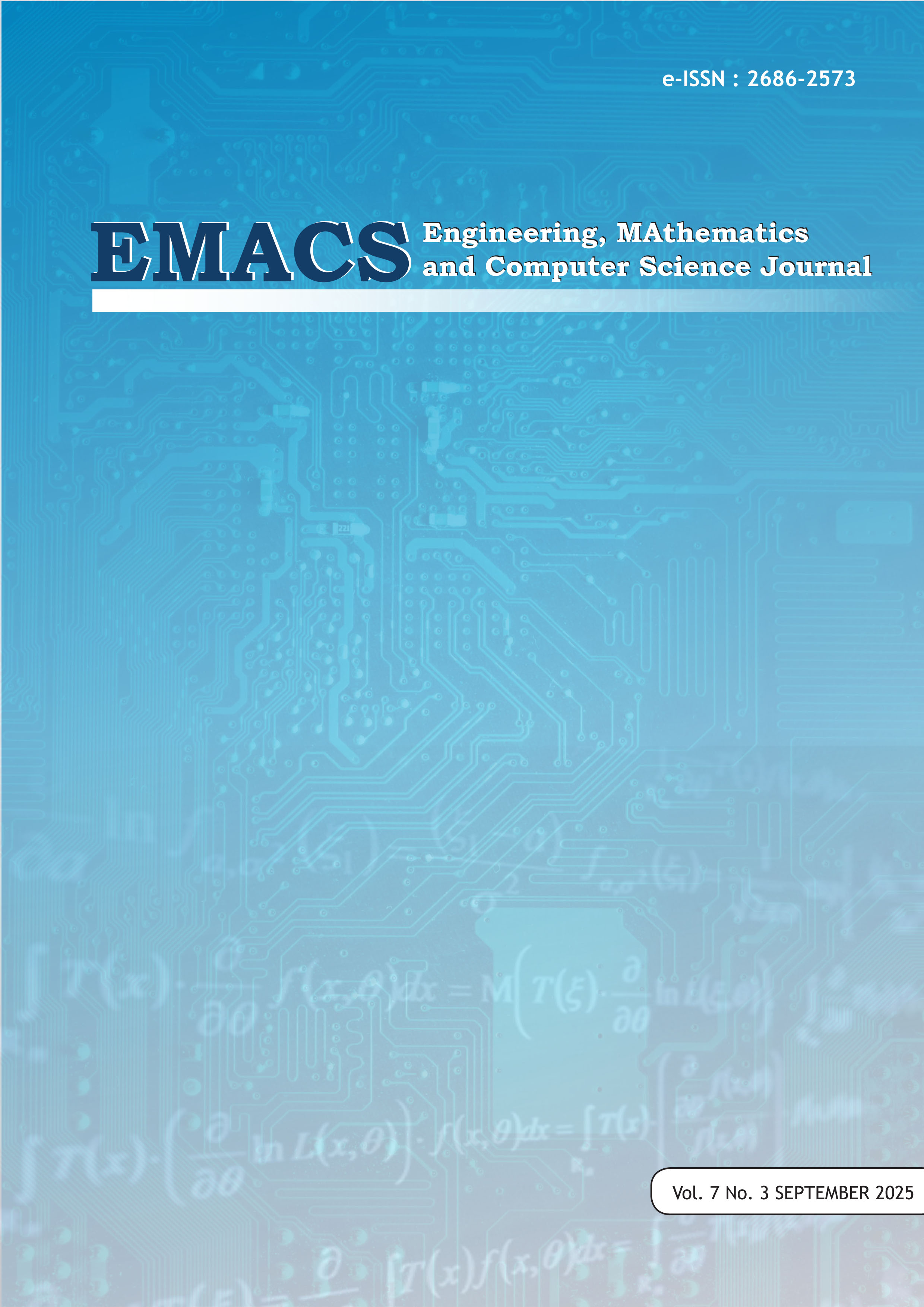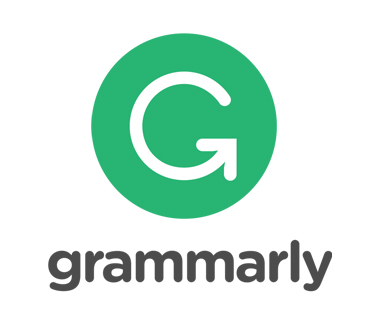Low-Resolution Face Recognition: A Review of Methods and Data
DOI:
https://doi.org/10.21512/emacsjournal.v7i3.14082Keywords:
Deep Learning, Face Recognition, low-resolution face recognitionAbstract
This paper provides a review of previous studies in Low-Resolution Face Recognition (LRFR), specifically focusing on cross-resolution Face Recognition (FR) methods. While state-of-the-art deep learning FR systems achieve high accuracy on high-resolution (HR) images, they are generally unsuitable for low-resolution (LR) images frequently encountered in applications like surveillance systems, where faces often have low pixel counts due to capture conditions. Cross-resolution FR, which compares an HR image with an LR image, presents a significant challenge due to the distinct visual properties of images at different resolutions. The paper discusses two primary approaches to address this problem: super-resolution (SR), which is a transformative method that aims to construct HR images from LR ones, and unified feature space (UFS), a non-transformative method that maps facial features from varying resolutions into a shared feature space. This work summarizes both SR and UFS methods. Based on the review, the paper concludes that non-transformative (UFS) methods are more suitable for future directions. This recommendation is driven by their lower computational power requirements, proven effectiveness in real-world implementations such as mobile devices and drones, and alignment with current technological trends. The paper also emphasizes the need for further research using real or natural LR face images to identify degradation patterns and compare results between real and artificially generated LR images.
References
Alansari, M., Alnuaimi, K., Alansari, S., Javed, S., Shoufan, A., Zweiri, Y., & Werghi, N. (2024). EfficientFaceV2S: A Lightweight Model and a Benchmarking Approach for Drone-Captured Face Recognition. https://ssrn.com/abstract=4698437
Alansari, M., Hay, O. A., Javed, S., Shoufan, A., Zweiri, Y., & Werghi, N. (2023). GhostFaceNets: Lightweight Face Recognition Model From Cheap Operations. IEEE Access, 11, 35429–35446. https://doi.org/10.1109/ACCESS.2023.3266068
Bansal, A., Nanduri, A., Castillo, C., Ranjan, R., & Chellappa, R. (2016). UMDFaces: An Annotated Face Dataset for Training Deep Networks. http://arxiv.org/abs/1611.01484
Bayramli, B., Ali, U., Qi, T., & Lu, H. (2019). FH-GAN: Face Hallucination and Recognition using Generative Adversarial Network. http://arxiv.org/abs/1905.06537
Benavente, R. (1998). The AR face database. https://www.researchgate.net/publication/243651904
Cao, Q., Shen, L., Xie, W., Parkhi, O. M., & Zisserman, A. (2017). VGGFace2: A dataset for recognising faces across pose and age. http://arxiv.org/abs/1710.08092
Chen, B.-C., Chen, C.-S., & Hsu, W. H. (2015). Face Recognition and Retrieval Using Cross-Age Reference Coding With Cross-Age Celebrity Dataset. IEEE Transactions on Multimedia, 17(6), 804–815. https://doi.org/10.1109/TMM.2015.2420374
Chen, C., Li, X., Yang, L., Lin, X., Zhang, L., & Wong, K.-Y. K. (2021). Progressive Semantic-Aware Style Transformation for Blind Face Restoration. http://arxiv.org/abs/2009.08709
Cheng, F., Lu, T., Wang, Y., & Zhang, Y. (2021). Face Super-Resolution Through Dual-Identity Constraint. 2021 IEEE International Conference on Multimedia and Expo (ICME), 1–6. https://doi.org/10.1109/ICME51207.2021.9428360
Cheng, Z., Zhu, X., & Gong, S. (2018). Low-Resolution Face Recognition. http://arxiv.org/abs/1811.08965
Dogan, B., Gu, S., & Timofte, R. (2019). Exemplar Guided Face Image Super-Resolution without Facial Landmarks. http://arxiv.org/abs/1906.07078
Duta, I. C., Liu, L., Zhu, F., & Shao, L. (2020). Improved Residual Networks for Image and Video Recognition. http://arxiv.org/abs/2004.04989
Ge, S., Zhao, S., Li, C., & Li, J. (2018). Low-resolution Face Recognition in the Wild via Selective Knowledge Distillation. https://doi.org/10.1109/TIP.2018.2883743
Gómez-Silva, M. J., Armingol, J. M., & de la Escalera, A. (2020). Triplet Permutation Method for Deep Learning of Single-Shot Person Re-Identification. http://arxiv.org/abs/2003.08303
Grgic, M., Delac, K., & Grgic, S. (2011). SCface - Surveillance cameras face database. Multimedia Tools and Applications, 51(3), 863–879. https://doi.org/10.1007/s11042-009-0417-2
Grm, K., Dobrišek, S., Scheirer, W. J., & Štruc, V. (2020). Face hallucination using cascaded super-resolution and identity priors. http://arxiv.org/abs/1805.10938
Hsu, H.-J., & Chen, K.-T. (2017). DroneFace: An Open Dataset for Drone Research. Proceedings of the 8th ACM on Multimedia Systems Conference. https://api.semanticscholar.org/CorpusID:26235272
Hu, X., Ren, W., LaMaster, J., Cao, X., Li, X., Li, Z., Menze, B., & Liu, W. (2021). Face Super-Resolution Guided by 3D Facial Priors. http://arxiv.org/abs/2007.09454
Huang, G. B., Ramesh, M., Berg, T., & Learned-Miller, E. (2008). Labeled Faces in the Wild: A Database for Studying Face Recognition in Unconstrained Environments. http://vis-www.cs.umass.edu/lfw/.
Huang, H., He, R., Sun, Z., & Tan, T. (2019). Wavelet Domain Generative Adversarial Network for Multi-scale Face Hallucination. International Journal of Computer Vision, 127(6), 763–784. https://doi.org/10.1007/s11263-019-01154-8
Huang, X., & Belongie, S. (2017). Arbitrary Style Transfer in Real-time with Adaptive Instance Normalization. http://arxiv.org/abs/1703.06868
Jiang, J., Wang, C., Liu, X., & Ma, J. (2021). Deep Learning-based Face Super-Resolution: A Survey. http://arxiv.org/abs/2101.03749
Kim, J., Li, G., Yun, I., Jung, C., & Kim, J. (2020). Edge and Identity Preserving Network for Face Super-Resolution. https://doi.org/10.1016/j.neucom.2021.03.048
Knoche, M., Elkadeem, M., Hormann, S., & Rigoll, G. (2023). Octuplet Loss: Make Face Recognition Robust to Image Resolution. 2023 IEEE 17th International Conference on Automatic Face and Gesture Recognition, FG 2023. https://doi.org/10.1109/FG57933.2023.10042669
Knoche, M., Hörmann, S., & Rigoll, G. (2021). Susceptibility to Image Resolution in Face Recognition and Trainings Strategies. https://doi.org/10.4230/LITES.8.1.1
Lai, S.-C., & Lam, K.-M. (2021). Deep Siamese network for low-resolution face recognition. 2021 Asia-Pacific Signal and Information Processing Association Annual Summit and Conference (APSIPA ASC), 1444–1449.
Li, J., Bare, B., Zhou, S., Yan, B., & Li, K. (2021). Organ-Branched CNN for Robust Face Super-Resolution. 2021 IEEE International Conference on Multimedia and Expo (ICME), 1–6. https://doi.org/10.1109/ICME51207.2021.9428152
Li, M., Zhang, Z., Yu, J., & Chen, C. W. (2021). Learning Face Image Super-Resolution Through Facial Semantic Attribute Transformation and Self-Attentive Structure Enhancement. IEEE Transactions on Multimedia, 23, 468–483. https://doi.org/10.1109/TMM.2020.2984092
Li, P., Prieto, L., Mery, D., & Flynn, P. (2018). On Low-Resolution Face Recognition in the Wild: Comparisons and New Techniques. https://doi.org/10.1109/TIFS.2018.2890812
Li, X., Li, W., Ren, D., Zhang, H., Wang, M., & Zuo, W. (2020). Enhanced Blind Face Restoration with Multi-Exemplar Images and Adaptive Spatial Feature Fusion. CVPR, 2706–2715. https://github.com/csxmli2016/ASFFNet.
Li, X., Liu, M., Ye, Y., Zuo, W., Lin, L., & Yang, R. (2018). Learning Warped Guidance for Blind Face Restoration. http://arxiv.org/abs/1804.04829
Lu, Z., Jiang, X., & Kot, A. (2018). Deep Coupled ResNet for Low-Resolution Face Recognition. IEEE Signal Processing Letters, 25(4), 526–530. https://doi.org/10.1109/LSP.2018.2810121
Massoli, F. V., Amato, G., & Falchi, F. (2020). Cross-Resolution Learning for Face Recognition. https://doi.org/10.1016/j.imavis.2020.103927
Mudunuri, S. P., Sanyal, S., & Biswas, S. (2018). GenLR-Net: Deep framework for very low resolution face and object recognition with generalization to unseen categories. Proceedings of the IEEE Conference on Computer Vision and Pattern Recognition (CVPR) Workshops, 602–611.
Nech, A., & Kemelmacher-Shlizerman, I. (2017). Level Playing Field for Million Scale Face Recognition. http://arxiv.org/abs/1705.00393
Sandler, M., Howard, A., Zhu, M., Zhmoginov, A., & Chen, L.-C. (2018). MobileNetV2: Inverted Residuals and Linear Bottlenecks. http://arxiv.org/abs/1801.04381
Sapkota, A., & Boult, T. E. (2013). Large scale unconstrained open set face database. 2013 IEEE Sixth International Conference on Biometrics: Theory, Applications and Systems (BTAS), 1–8. https://doi.org/10.1109/BTAS.2013.6712756
Schaefer, S., Mcphail, T., & Warren, J. (2006). Image Deformation Using Moving Least Squares. ACM SIGGRAPH.
Sun, J., Wenming, Y., Shen, Y., & Liao, Q. (2020). Classifier shared deep network with multi-hierarchy loss for low resolution face recognition. Signal Processing: Image Communication, 82, 115766. https://doi.org/10.1016/j.image.2019.115766
Talreja, V., Taherkhani, F., Valenti, M. C., & Nasrabadi, N. M. (2019). Attribute-Guided Coupled GAN for Cross-Resolution Face Recognition. http://arxiv.org/abs/1908.01790
Terhörst, P., Ihlefeld, M., Huber, M., Damer, N., Kirchbuchner, F., Raja, K., & Kuijper, A. (2021). QMagFace: Simple and Accurate Quality-Aware Face Recognition. http://arxiv.org/abs/2111.13475
Wang, C., Jiang, J., & Liu, X. (2021). Heatmap-Aware Pyramid Face Hallucination. 2021 IEEE International Conference on Multimedia and Expo (ICME), 1–6. https://doi.org/10.1109/ICME51207.2021.9428256
Wang, K., Oramas, J., & Tuytelaars, T. (2020). Multiple Exemplars-based Hallucinationfor Face Super-resolution and Editing. http://arxiv.org/abs/2009.07827
Wolf, L., Hassner, T., & Maoz, I. (2011). Face recognition in unconstrained videos with matched background similarity. CVPR 2011, 529–534. https://doi.org/10.1109/CVPR.2011.5995566
Yin, Y., Robinson, J. P., Zhang, Y., & Fu, Y. (2020). Joint Super-Resolution and Alignment of Tiny Faces. http://arxiv.org/abs/1911.08566
Yu, X., Zhang, L., & Xie, W. (2021). Semantic-Driven Face Hallucination Based on Residual Network. IEEE Transactions on Biometrics, Behavior, and Identity Science, 3(2), 214–228. https://doi.org/10.1109/TBIOM.2021.3051268
Zangeneh, E., Rahmati, M., & Mohsenzadeh, Y. (2020). Low Resolution Face Recognition Using a Two-Branch Deep Convolutional Neural Network Architecture. http://arxiv.org/abs/1706.06247
Zeng, D., Chen, H., & Zhao, Q. (2016). Towards resolution invariant face recognition in uncontrolled scenarios. 2016 International Conference on Biometrics (ICB), 1–8. https://doi.org/10.1109/ICB.2016.7550087
Zha, J., & Chao, H. (2019). TCN: Transferable Coupled Network for Cross-Resolution Face Recognition. ICASSP 2019 - 2019 IEEE International Conference on Acoustics, Speech and Signal Processing (ICASSP), 3302–3306. https://doi.org/10.1109/ICASSP.2019.8682384
Zhao, X. (2021). Homogeneous Low-Resolution Face Recognition Method based Correlation Features. http://arxiv.org/abs/2111.13175
Downloads
Published
How to Cite
Issue
Section
License
Copyright (c) 2025 Yesun Utomo, Kelvin

This work is licensed under a Creative Commons Attribution-ShareAlike 4.0 International License.
Authors who publish with this journal agree to the following terms:
- Authors retain copyright and grant the journal right of first publication with the work simultaneously licensed under a Creative Commons Attribution License - Share Alike that allows others to share the work with an acknowledgment of the work's authorship and initial publication in this journal.
- Authors are able to enter into separate, additional contractual arrangements for the non-exclusive distribution of the journal's published version of the work (e.g., post it to an institutional repository or publish it in a book), with an acknowledgment of its initial publication in this journal.
- Authors are permitted and encouraged to post their work online (e.g., in institutional repositories or on their website) prior to and during the submission process, as it can lead to productive exchanges, as well as earlier and greater citation of published work.
USER RIGHTS
All articles published Open Access will be immediately and permanently free for everyone to read and download. We are continuously working with our author communities to select the best choice of license options, currently being defined for this journal as follows: Creative Commons Attribution-Share Alike (CC BY-SA)





